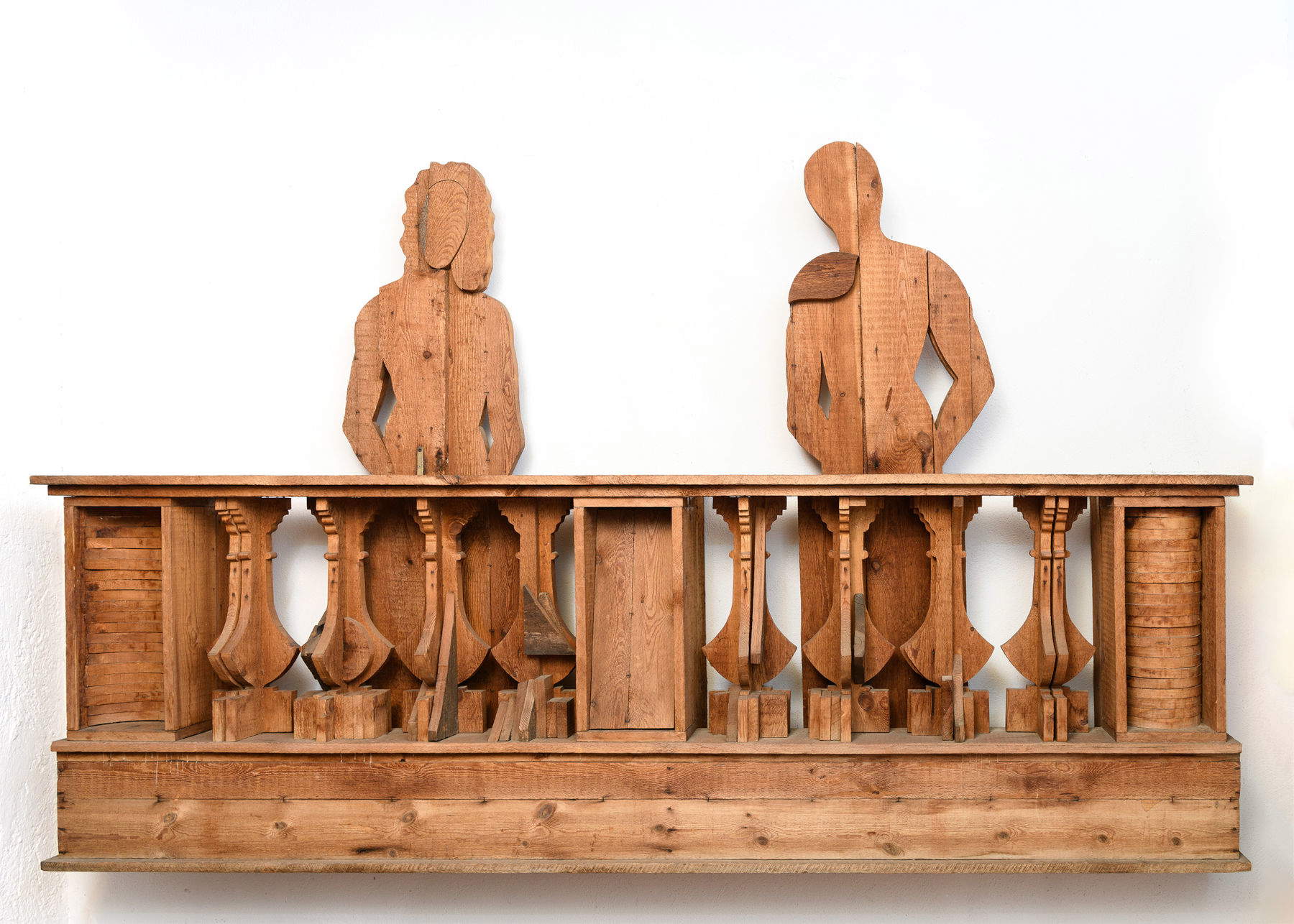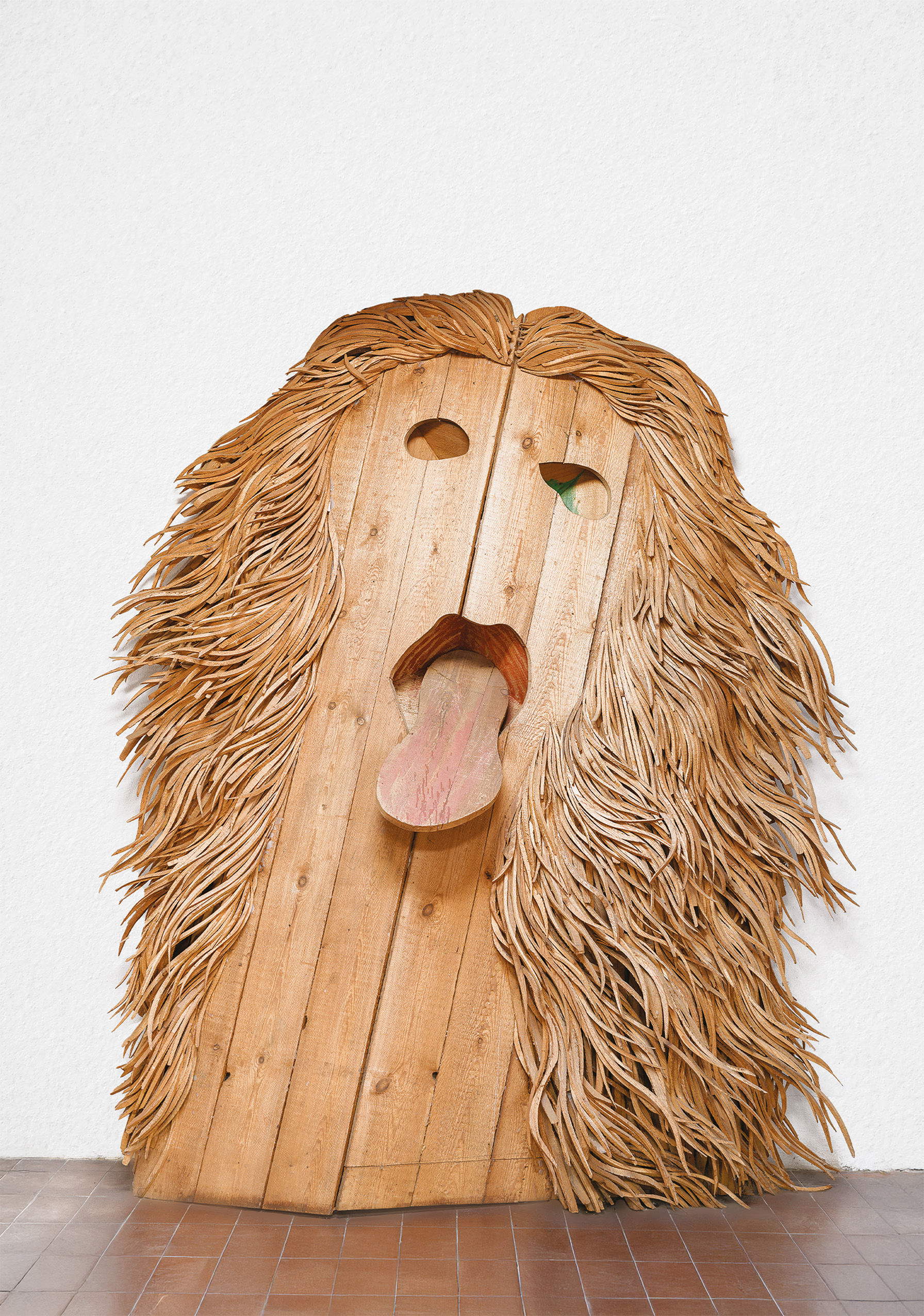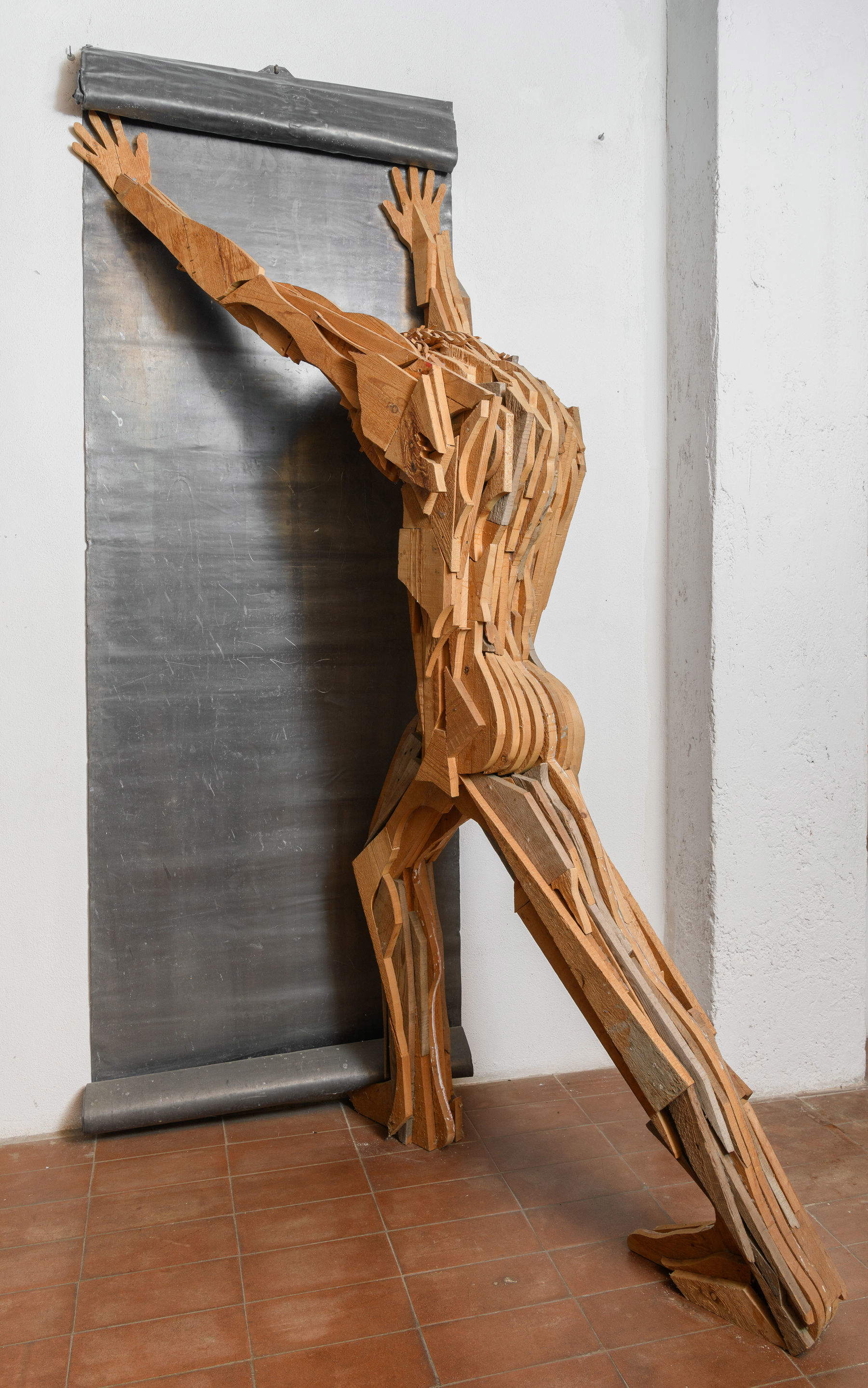From Oct. 7, 2025 to Jan. 11, 2026, the National Gallery of Modern and Contemporary Art in Rome is dedicating a major monographic exhibition to Mario Ceroli (Castel Frentano, 1938), a central figure in 20th-century Italian sculpture. Entitled Ceroli Totale, the exhibition, produced in collaboration with Banca Ifis and curated by Renata Cristina Mazzantini and Cesare Biasini Selvaggi, traces seventy years of the artist’s work through a selection of twenty works including sculptures and installations from the Gallery’s collection, that of Banca Ifis and Ceroli himself. The exhibition is part of the Artist at GNAMC program, an annual initiative that involves a protagonist of the contemporary art scene with meetings open to the public, scholars and students from Valle Giulia’s academies and university faculties. For the 2025 edition, Ceroli will be the protagonist of a series of appointments and dialogues designed to delve directly into his work. On this occasion he has created two site-specific works, The Great Oak and The Ashes, which enrich the exhibition itinerary and testify to the vitality of his research.
“It is a privilege,” says Renata Cristina Mazzantini, director of the Galleria Nazionale d’Arte Moderna e Contemporanea and co-curator of the exhibition, “to retrace with Mario Ceroli the most significant stages of an artistic career that, masterpiece after masterpiece, spans the history of Italian art, from the Scuola di Piazza del Popolo to Arte Povera, up to today. Ceroli has magnificently staged a richly evocative exhibition that reinterprets each work, historical and recent, with self-irony in a constant search for self.”

"Ceroli Totale," says Ernesto Fürstenberg Fassio, president of Banca Ifis, "is a selection of masterpieces acquired by Banca Ifis, documenting his artistic career from the 1950s to the present. It is a goal that we started last year precisely at the GNAMC, which today is strengthened with this exhibition and which envisions in 2026 the opening of the Ceroli Museum to the public. Our Bank’s desire is to move forward toward opening the museum to preserve the collection-in the fascinating environment of the artist’s home, garden and hangar-studio-and to enable its research and experimentation through workshops and ateliers for young people."
“This exhibition I conceived it dry and simple, with a current flavor, serious, made with the head but also with the heart, culturally healthy,” says Mario Ceroli. “The works that follow one another from room to room make me feel the momentum and enthusiasm of when as a boy, at the age of seventeen, I made the nailed trunk now on display entitled ”Composition," owned by the National Gallery of Modern and Contemporary Art. When I finished the exhibit, I felt like I was in a big square, the one in Piazza del Popolo, at the Caffè Rosati, when Rome was the avant-garde, with the galleries of the time, La Tartaruga, La Salita, L’Attico, and the new generation of the Roman school."

"The Ceroli Totale exhibition," argues Cesare Biasini Selvaggi, co-curator of the show, “was conceived by the artist as a work of art in itself, ’total,’ a new act in a long and coherent continuity and imaginative freedom of enactments that have been going on for seventy years to the present. The exhibition intends to highlight how Ceroli’s permanent research has always managed to renew itself in space by risking the successes and consecrations achieved each time, pioneering sensibilities, trends, and macro orientations of contemporary creativity.”
Distributed in ten rooms of the museum, the exhibition presents some of the artist’s best-known masterpieces, such as La Cina (1966),Primavera (1968), Balcony (1966), Project for Peace (1969) and The Battle (1978), alongside lesser-known works or works that have never been exhibited to the public, including Sesto senso (1999), Le chiacchiere (1989), Canvas of Penelope (1992) and Burmese Harp (1992). The installation is conceived as a theater in which each work takes on the role of a character called upon to play a new role. Many of the installations occupy the entire allotted space to engage the viewer in an immersive experience, transforming the visit into a journey to an elsewhere constructed by the artist.



The exhibition itinerary opens with three works placed within the new permanent collections display. Last Supper (1965) introduces the visitor with an essential and monumental scene: twelve rough-hewn wooden apostles, divided into two groups and seated on stools, lacking the traditional set table. In the center, an empty seat recalls the absence of Christ, transforming the sculpture into a reflection on the theme of presence and emptiness. Next comes The Flags of the Whole World (1968), an installation over eight and a half meters long composed of galvanized channels containing polychrome pigments, glass and charcoal fragments, shellac, stones, iron shavings, and flakes of copper sulfate. Acquired in 2024 as part of the Plan for Contemporary Art, the work belongs to theArte Povera season and is a tribute to the variety and beauty of the earth, emphasizing how the diversity of materials and colors overcomes cultural boundaries and differences.
At the entrance to the monographic section, the public is greeted by Mangiafuoco (1990), an unpublished sculpture obtained from planks and filaments of wood made from remnants of previous works. In this figure Ceroli constantly reworks the material, comparing trees to life itself and the physical structure of man. The connection to personal memory runs through many of the works in the exhibition. Penelope’s Canvas (1992), for example, evokes the artist’s childhood memories in Castel Frentano, in the home of his grandmother Filomena, who devoted herself daily to weaving. The work restores the intimate, domestic dimension of a female world of ritual gestures and care, evoking distant scents and sounds such as the hypnotic rhythm of the loom, also recalled by Burmese Harp (1992). The relationship with the past and personal experience also emerges in Primavera (1968), a parallelepiped formed by pointed wooden beams that refers to the Italian-style gardens of Palazzo Farnese, frequented by Ceroli during his adolescence. The work is offered as a tribute to one of the most important traditions of Italian landscape design, in which material and manual skill become tools for representing life.
Reflection on the codes of Western art is at the center of La battaglia (1978), inspired by the panels of Paolo Uccello’s Battaglia di San Romano. The work, dedicated to the memory of Pier Paolo Pasolini, with whom Ceroli collaborated, measures nearly nine meters in length by three and a half meters in height. Far from being a simple quotation, this sculpture presents itself as a scenic, cinematic tale: the viewer finds himself immersed in the grid of spears and horses, as part of a visual sequence that transcends the boundaries of pictorial representation. The path concludes with Composizione (1957-1958), a nailed tree trunk, a rare example of the works Ceroli made between 1956 and 1960. The work, awarded in 1960 by Cesare Brandi with the Prize for Young Sculpture and acquired by the National Gallery, testifies to the artist’s early interest in natural matter and in the ability of wood to transform over time.
 |
| Mario Ceroli, 70 years of sculpture on display at the National Gallery in Rome |
Warning: the translation into English of the original Italian article was created using automatic tools. We undertake to review all articles, but we do not guarantee the total absence of inaccuracies in the translation due to the program. You can find the original by clicking on the ITA button. If you find any mistake,please contact us.